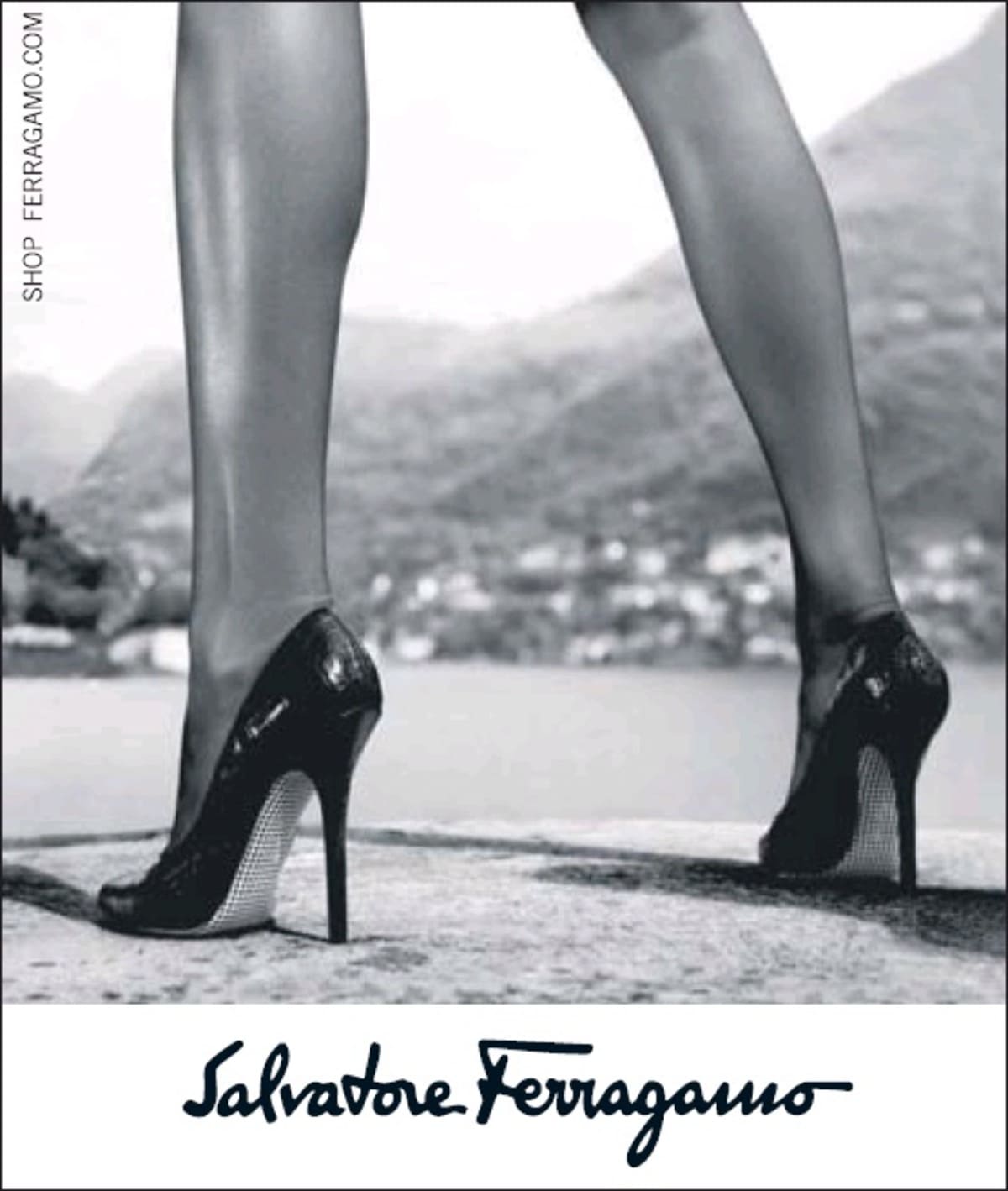Salvatore Ferragamo, a name synonymous with luxury and innovation, has a storied history that traces back to the early 20th century. In 1915, Salvatore Ferragamo emigrated from southern Italy to the United States, where he initially worked at the Thomas G. Plant Shoe Factory in Boston. His journey soon led him to Santa Barbara, California, where he joined his brothers and opened the Hollywood Boot Shop in 1923. This shop quickly gained fame for its high-quality shoes, attracting Hollywood stars like Joan Crawford and Gloria Swanson. Ferragamo’s creations were not only stylish but also designed for comfort, an attribute he meticulously achieved through his studies in human anatomy.
In 1927, Ferragamo returned to Florence, Italy, to establish his eponymous brand, blending the city’s artisanal craftsmanship with American manufacturing efficiency. Despite facing financial difficulties during the Great Depression, Ferragamo’s resilience saw him through, and by 1938, he had acquired the Palazzo Spini Feroni, which remains the company’s headquarters to this day. The post-war era marked a significant expansion for Ferragamo, with the brand opening its first U.S. store on Park Avenue, New York, in 1948. Salvatore Ferragamo’s death in 1960 saw his wife, Wanda, take over, who expanded the brand into silk scarves, fragrances, leather handbags, and ready-to-wear fashion, cementing its place in the luxury market.
Over the decades, Ferragamo has remained at the forefront of fashion, known for its innovative designs such as the wedge heel, invisible sandal, and metal heels. The brand has also introduced iconic items like the ‘Vara’ patent ballet pump and the ‘Salvatore’ bag. Today, Ferragamo continues to evolve under new leadership and creative direction, maintaining its legacy of elegance and innovation. Identifying vintage Ferragamo pieces, particularly through their logos and tags, offers a fascinating glimpse into the brand’s rich history and its journey from a small Hollywood boot shop to a global fashion powerhouse.
A$AP Rocky Narrates Ferragamo Commercial
How to tell if Ferragamo is vintage from the logo
Ferragamo has a rich history of logo evolution, reflecting its growth and changing design trends over the decades. By examining the logos used throughout its history, you can identify the era a particular Ferragamo item is from. Here is a guide to help you determine if your Ferragamo piece is vintage based on its logo.
1927 to 1930 Ferragamo logo
- This logo features the name “Ferragamo” prominently.
- The design is bold and geometric, characteristic of early 20th-century typography.
- It includes “Creations” and “Florence Italy” to emphasize the brand’s origin and craftsmanship.
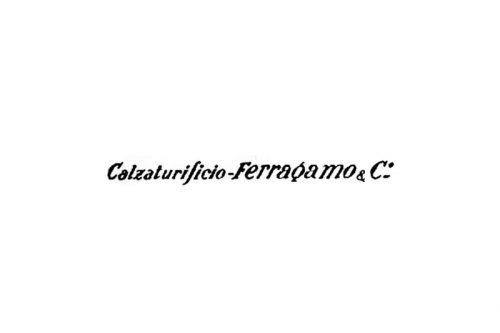
1927 to 1930 Ferragamo logo
1930 to 1948 Ferragamo logo
- The logo style transitions to a more streamlined and sophisticated font.
- Salvatore Ferragamo” is prominently displayed, reflecting the brand’s full name recognition.
- It retains a simple and elegant design, suitable for high-end fashion branding.
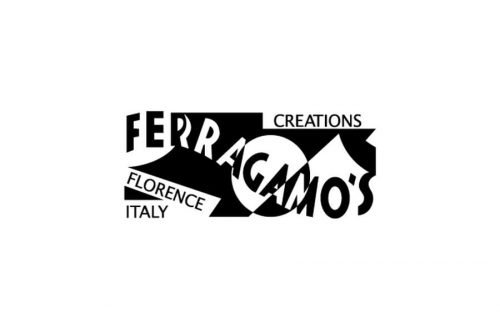
1930 to 1948 Ferragamo logo
1948 to 1951 Ferragamo logo
- This period’s logo maintains the elegant script of the previous era.
- The logo is clean and minimalist, focusing on the brand name without additional elements.
- It highlights the prestige and simplicity associated with post-war fashion.
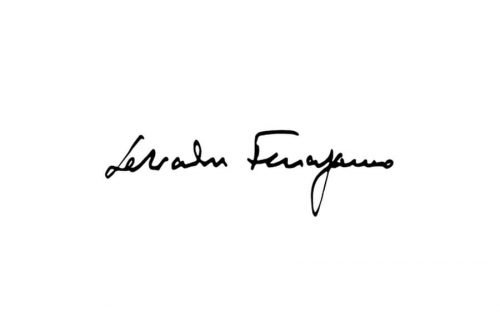
1948 to 1951 Ferragamo logo
1951 to 1960 Ferragamo logo
- The logo features “Salvatore Ferragamo” in a slightly more refined script.
- The emphasis is on luxury and sophistication, matching the high fashion standards of the 1950s.
- This era’s logo is often found on leather goods and shoes, symbolizing craftsmanship.
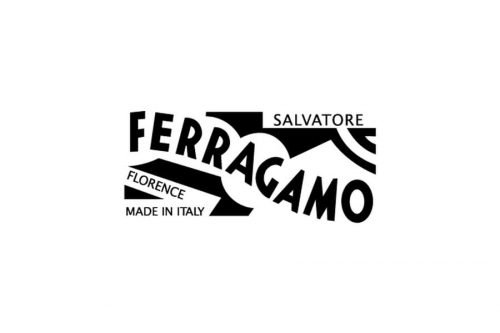
1951 to 1960 Ferragamo logo
1960 to 1982 Ferragamo logo
- The logo undergoes slight modifications to the script, making it more fluid and elegant.
- Salvatore Ferragamo” remains the focal point, emphasizing the designer’s influence.
- It is used consistently across various product lines, ensuring brand recognition.
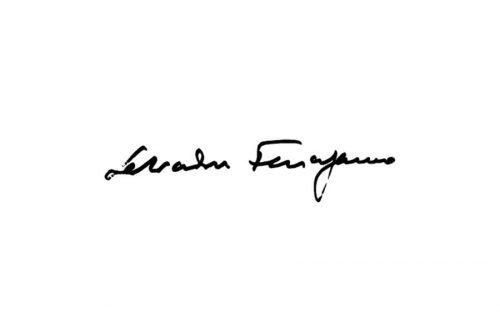
1960 to 1982 Ferragamo logo
1982 to now Ferragamo logo
- The modern logo maintains the iconic script but with a more contemporary flair.
- It is sleek and elegant, reflecting the brand’s evolution into a global fashion powerhouse.
- The logo’s design remains consistent, ensuring brand loyalty and recognition.
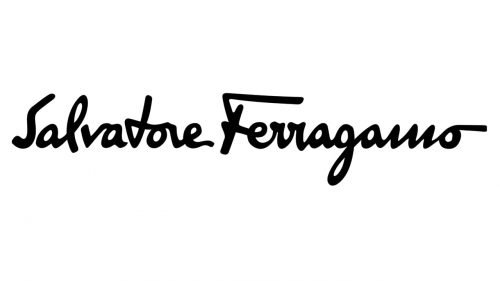
1982 to now Ferragamo logo
How to tell if Ferragamo is vintage from the tags
Salvatore Ferragamo, a renowned Italian luxury brand, has seen its clothing tags evolve significantly over the decades. Each era reflects a distinct style and branding approach, making it possible to identify vintage pieces based on their tags. Here’s how to distinguish Ferragamo tags from different decades.
If your tags are hard to read, head to our vintage label identification page, and we’ll help you identify those vintage labels!
1980s vintage Ferragamo tags
- Tags from this era often feature the “Salvatore Ferragamo Firenze” branding.
- The tags are typically rectangular and display bold, cursive lettering.
- Commonly made from fabric materials with “Made in Italy” and size indicators.
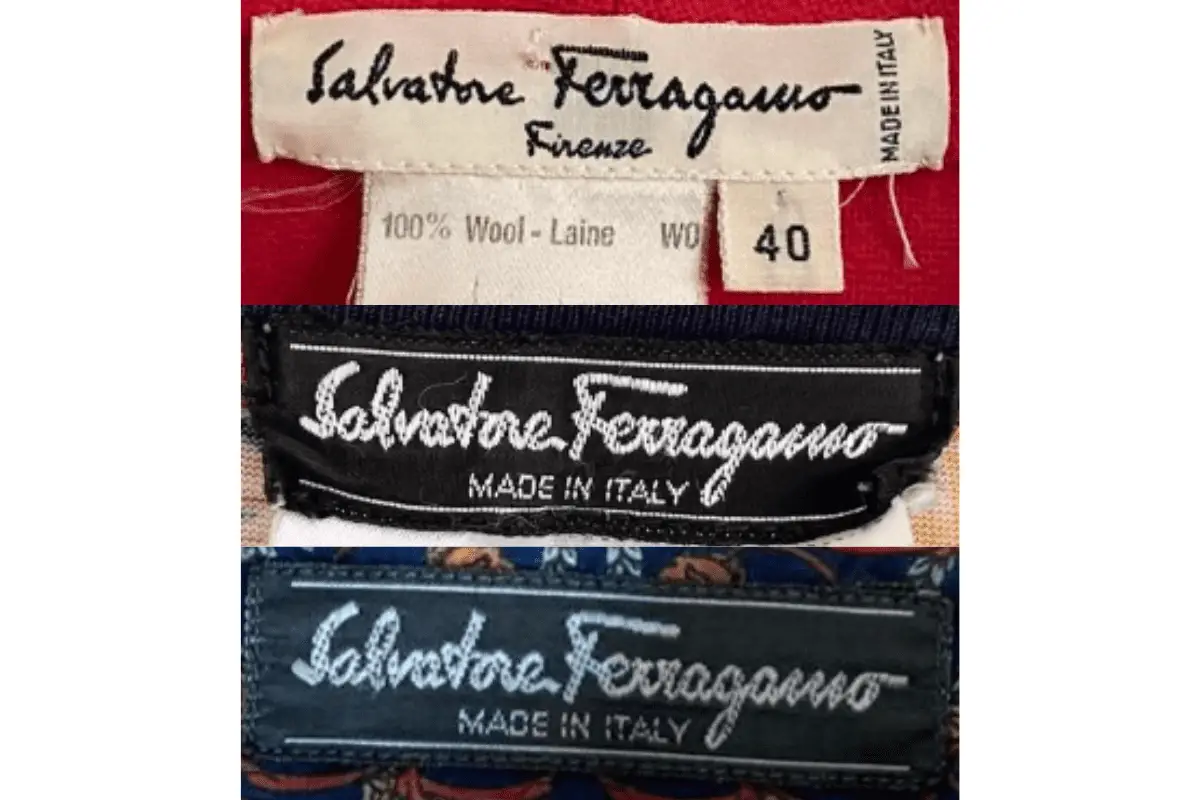
1980s Ferragamo tags
1990s vintage Ferragamo tags
- Rectangular tags with “Salvatore Ferragamo” in bold cursive font.
- Include “Made in Italy” below the main logo.
- Often paired with additional tags specifying fabric content and care instructions.
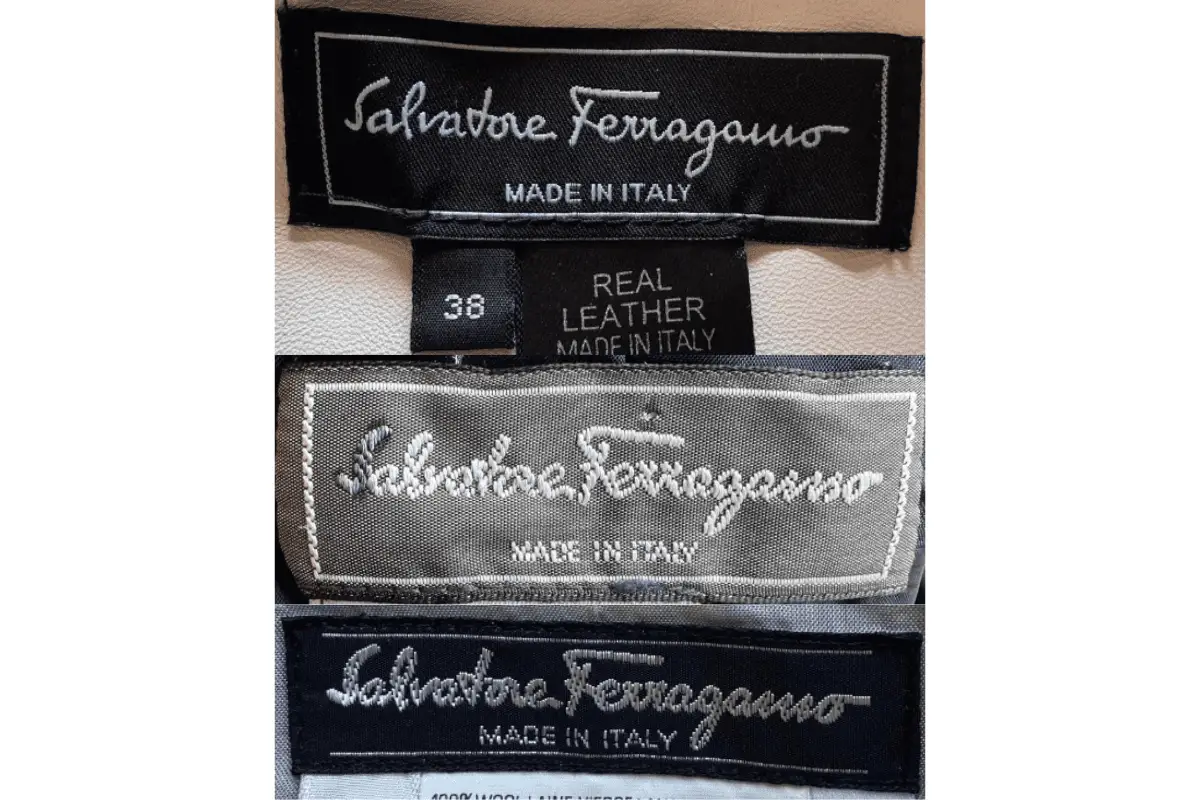
1990s Ferragamo tags
2000s vintage Ferragamo tags
- Modernized look with sleek, rectangular tags.
- Features the “Salvatore Ferragamo” cursive logo with “Made in Italy” underneath.
- Tags may include more detailed fabric content and care instructions on separate smaller tags.
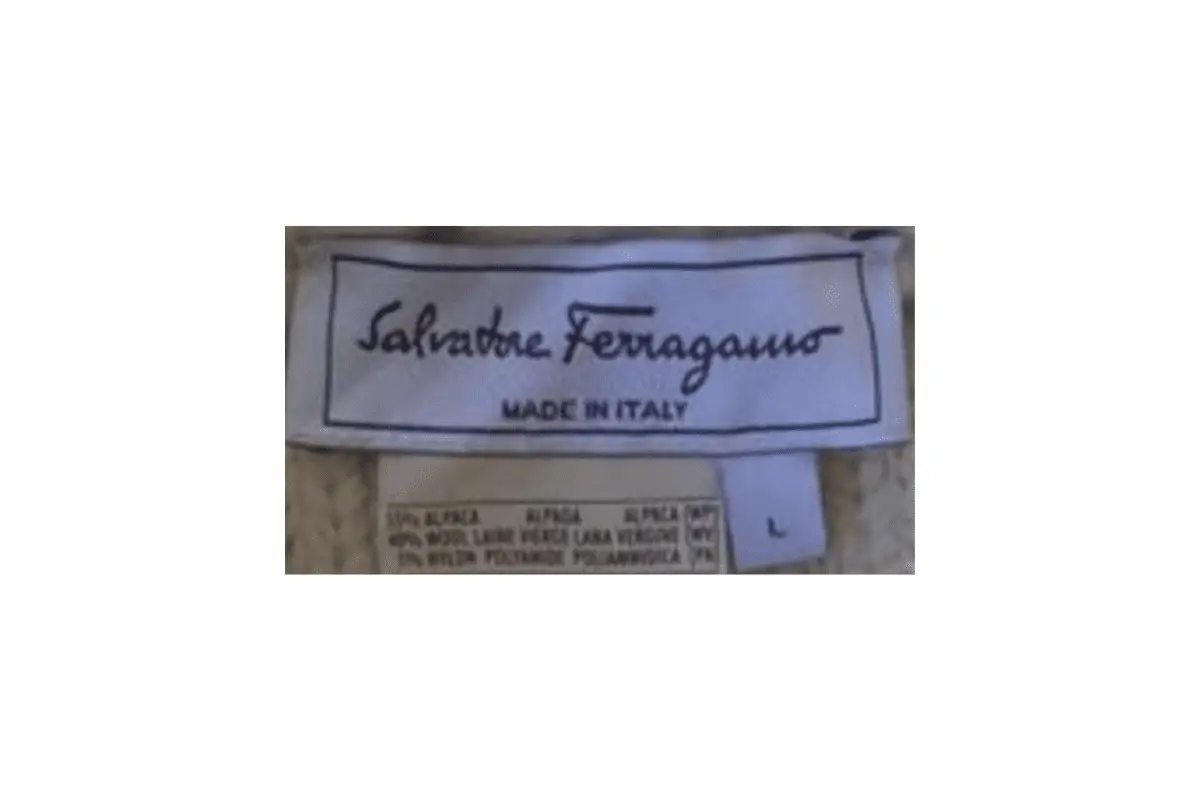
2000s Ferragamo tags
